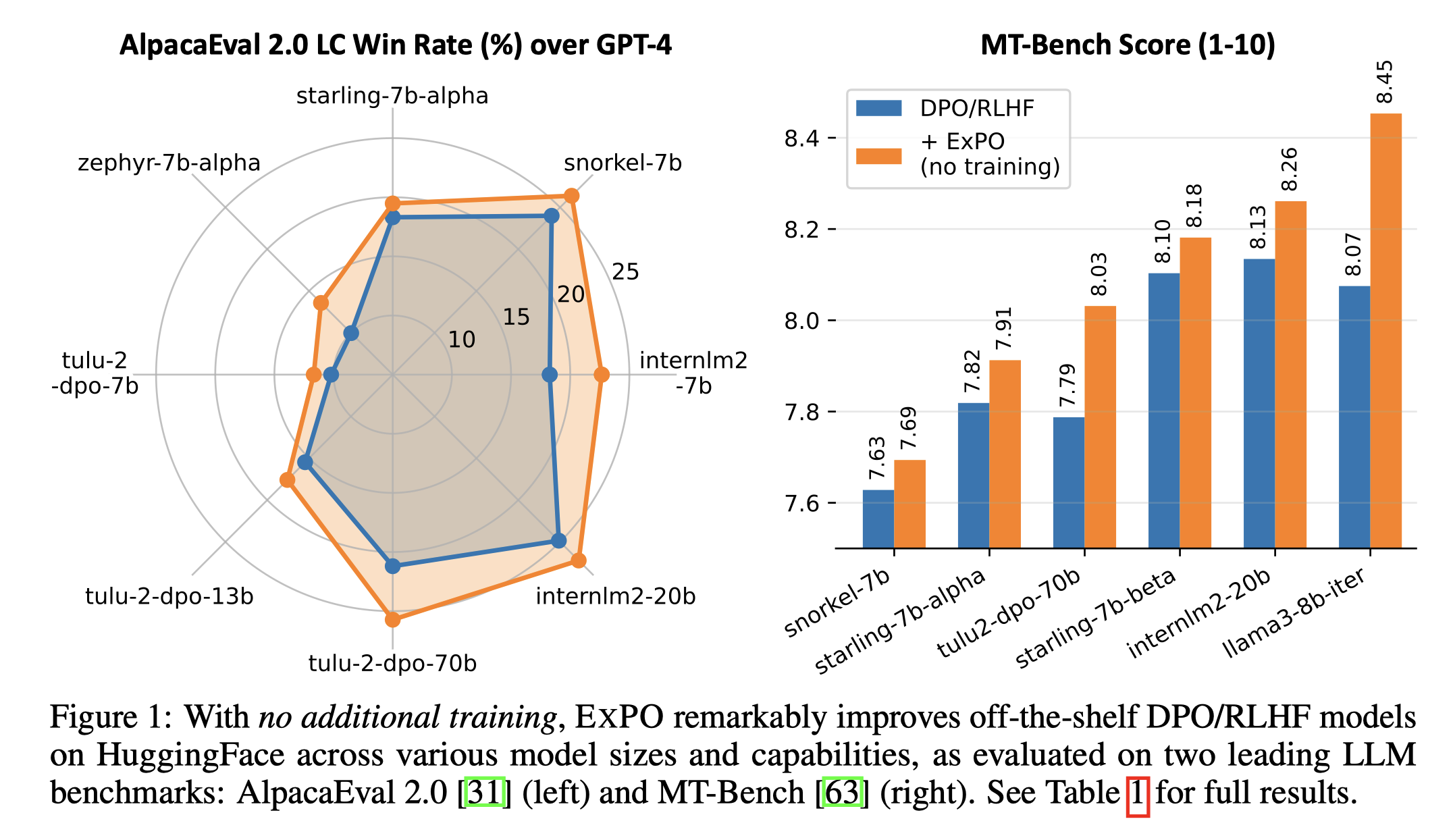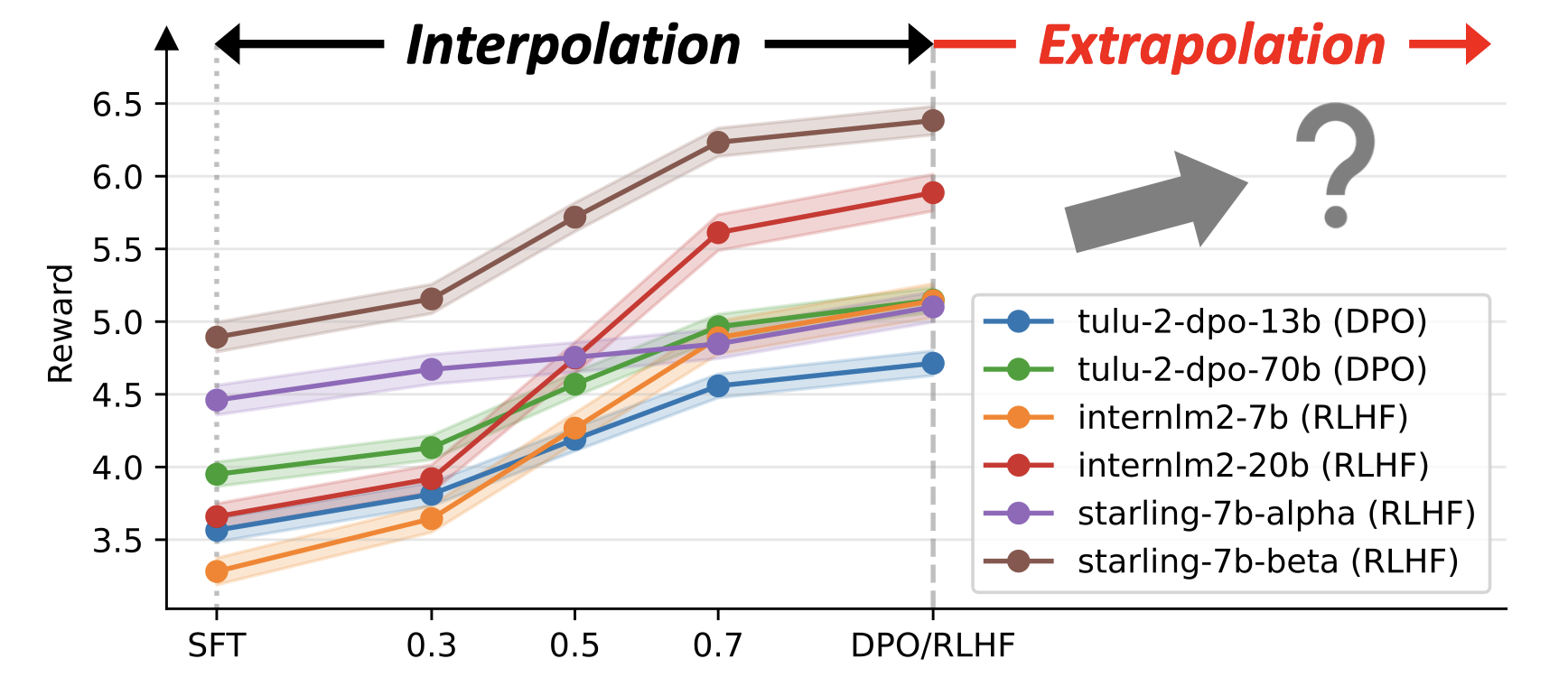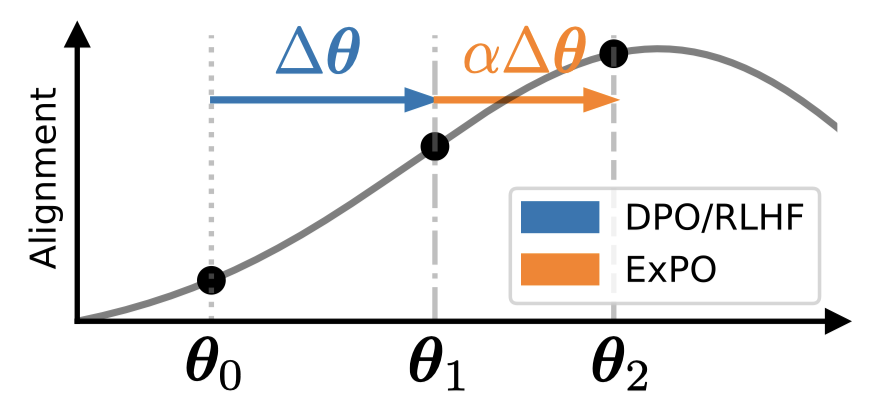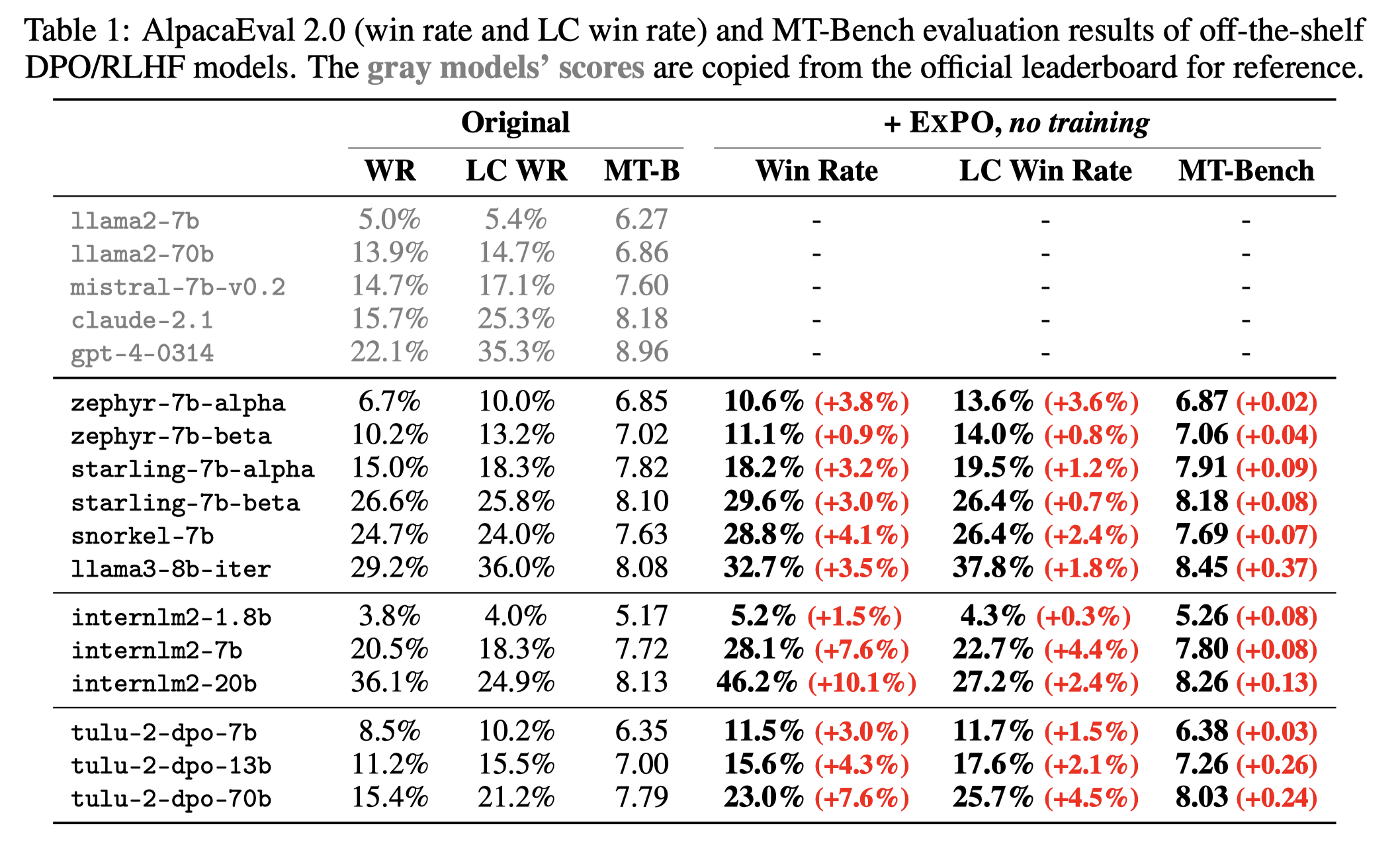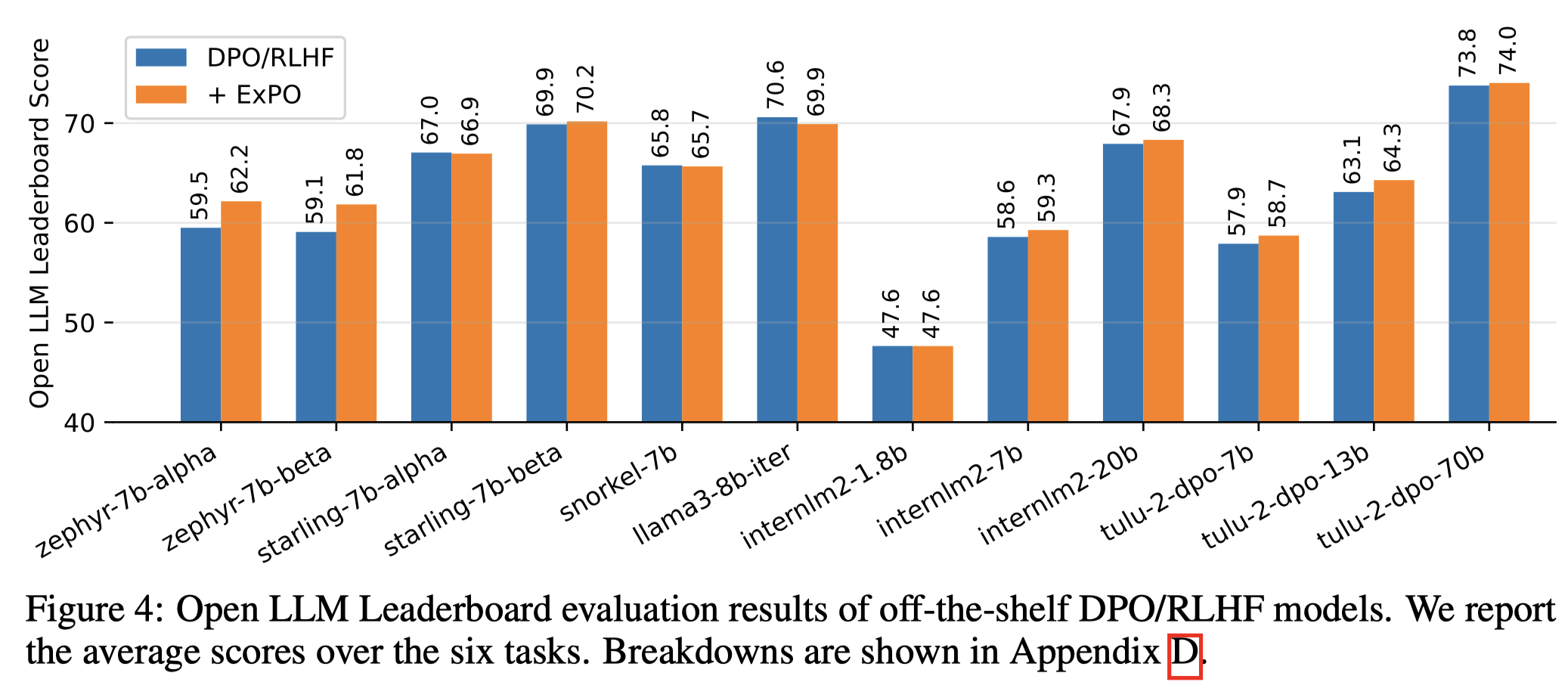Official repository for paper "Weak-to-Strong Extrapolation Expedites Alignment" [tweet]
If you find this repository useful or our work is related to your research, please kindly cite it:
@article{
llm-extrapolation,
title={Weak-to-Strong Extrapolation Expedites Alignment},
author={Chujie Zheng and Ziqi Wang and Heng Ji and Minlie Huang and Nanyun Peng},
journal={arXiv preprint arXiv:2404.16792},
year={2024}
}
- [05/2024] We have made a revision to the ExPO paper, adding the basic theoretical explanation and more comprehensive evaluation (more benchmarks and models). Overall, ExPO is extremely simple, efficient, and scalable. Try it to boost your aligned LLMs!
- [05/2024] We are constantly uploading new ExPO-enhanced LLMs to 🤗 HuggingFace (e.g., LLaMA-3 models, from 8B to 70B). You can give them a try!
- [05/2024] Our uploaded ExPO-enhanced LLMs have received 10K+ downloads in 2 weeks on 🤗 HuggingFace!
This work presents ExPO, an extremely simple method to boost LLMs' alignment with human preference via weak-to-strong model extrapolation
ExPO is inspired by model interpolation. We find that interpolating between the weights of a DPO/RLHF model and its initial SFT checkpoint usually results in in-between performance. Then, what if we consider a DPO/RLHF model as the interpolated result from the initial SFT model and a hypothetically better-aligned model?
ExPO is extremely simple and efficient, which can be implemented in a few lines of code (as in extrapolate.py)
Theoretically, ExPO takes first-order approximation to implicitly optimize the alignment objective
ExPO is also scalable across models of various sizes and capabilities, as evaluated on AlpacaEval 2.0 and MT-Bench
It has little impact on the base model's capability, as evaluated on Open LLM Leaderboard
We have uploaded the trained checkpoints and extrapolated models on 🤗 HuggingFace.
For the extrapolated models applied to open-source models, see this 🤗 HuggingFace collection.
For the zephyr checkpoints trained from zephyr-7b-sft-full in our controlled experiments, see this 🤗 HuggingFace collection.
The implementation of ExPO is extremely simple. You can refer to the code extrapolate.py (setting alpha to 0.3 or 0.5 is usually good).
You can find the raw outputs of the standardized benchmarks AlpacaEval 2.0 (results_alpaca), MT-Bench (results_mtbench), and Open LLM Leaderboard (results_lmeval). For Open LLM Leaderboard, you can find the scores of the non-existing models from the official leaderboard.
We have also uploaded the AlpacaEval 2.0 evaluation results to the official leaderboard. You can find the detailed inference hyperparameters in their repository for reproduction.
The inference code includes generate_ultrafeedback.py and generate_alpaca.py. The script scripts/Starling-LM-7B-beta_extra.sh shows:
- Do model extrapolation (ExPO) with a DPO/RLHF and its initial SFT checkpoints
- Use a HuggingFace model to generate responses on UltraFeedback or AlpacaEval 2.0. The outputs will be saved to
outputs_ultrafeedbackoroutputs_alpaca - Score the outputs using the reward model. The reward scores will be saved to
rewards_ultrafeedbackorrewards_alpaca
For the part of evaluation on standardized benchmarks:
- To run the official AlpacaEval 2.0 evaluation, follow https://github.com/tatsu-lab/alpaca_eval?tab=readme-ov-file#evaluating-a-model
- To run the official MT-Bench evaluation, follow https://github.com/lm-sys/FastChat/tree/main/fastchat/llm_judge (you can host the local vllm server to speed up inference)
- To run the official Open LLM Leaderboard evaluation, follow https://huggingface.co/spaces/HuggingFaceH4/open_llm_leaderboard (About -> REPRODUCIBILITY)
